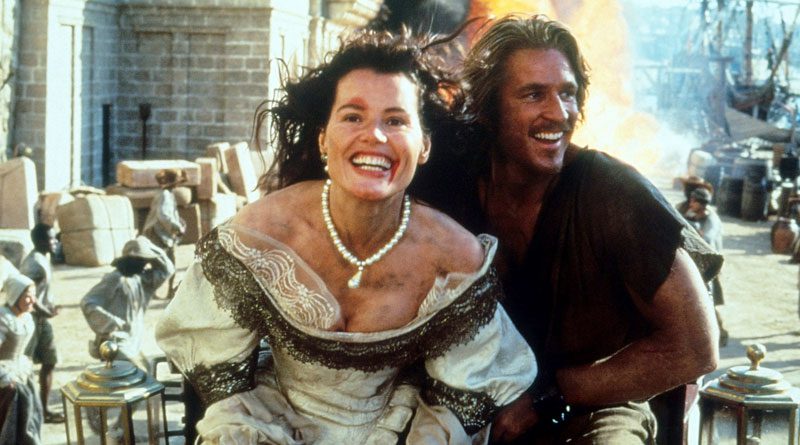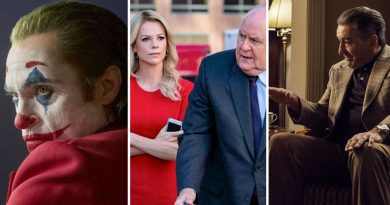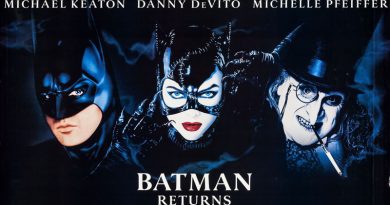Cutthroat Island at 25: Big on Action, Light on Plot
Remember Carolco Pictures? The once-thriving independent production company was responsible for giving us some of the most iconic blockbusters of the 80s and 90s. This included Rambo: First Blood Part II (1985), Total Recall (1990), Terminator 2: Judgment Day (1991), Basic Instinct (1992) and Cliffhanger (1993), just to name a few.
But by 1995, Carolco was already facing a huge debt and even on the brink of bankruptcy as a result of overspending as well as numerous movie flops in between. And yet, they took a big gamble — US$98 million, to be exact — to make a big-budget pirate movie called Cutthroat Island. It was a bold risk one way or another, beginning with their attempt to resurrecting the long-forgotten pirate genre for the modern generation at the time.
The movie may have Renny Harlin of Die Hard 2 (1990) and Cliffhanger fame on the helm as the director but it still lacked a big-name star attached to it. Michael Douglas was initially attached to star as William Shaw but chose to back out of the project due to multiple issues. Numerous actors like Charlie Sheen, Tom Cruise, Keanu Reeves and Michael Keaton were reportedly approached by the studio. But none of them was interested until they have to settle with the less-bankable Matthew Modine, whose prior credits included Full Metal Jacket (1987) and Pacific Heights (1990).
Pairing him with Harlin’s then-wife, Geena Davis didn’t exactly inspire confidence either, particularly when comes to the movie’s selling point. Davis may have been an accomplished actress, who won an Oscar for 1988’s The Accidental Tourist and appeared in critically-acclaimed films like The Fly (1986), Thelma & Louise (1991) and A League of Their Own (1992). But she’s hardly a bankable Hollywood star and wasn’t known for playing action roles.
Cutthroat Island was also famously plagued with production issues namely, the cast and crew suffering from injuries and sickness and the full-sized replica of a wooden pirate ship catches fire during filming. If that’s not enough, the ship itself costs a whopping US$1 million to build.
By the time the movie opened on December 22, 1995, it was already dead on arrival. Reviews were mostly negative and audiences didn’t really care of checking the movie out, resulting in an embarrassing opening-weekend debut at… No. 13 (!) at the US box office with just US$2.3 million. Cutthroat Island died a quick death from there before settling for a measly US$10 million in total.
Since then, the movie was synonymous with its ill-fated reputation for being one of the biggest box-office bombs in Hollywood history. It was a cruel lesson for everyone involved and caused Carolco to sink at the end of the day. No one in Hollywood would dare to make another big-budget pirate movie for the next eight years. It wasn’t until Disney’s Pirates of the Caribbean: The Curse of the Black Pearl arrived in 2003 and help resurrected the genre. The rest, as they say, is history.
Back to Cutthroat Island, the biggest problem of its failure lies on the script itself. I remember watching the movie for the first time back in the 90s and found the story and characters were largely dull and uninspired. Having revisited the movie again recently, my feeling remains the same. The story is straightforward enough: A female pirate, Morgan Adams (Geena Davis), is determined to locate a hidden treasure with the help of a conman William Shaw (Matthew Modine) and her crew. But along the way, she has to deal with her rival, Dawg Brown (Frank Langella), who are seeking the same thing as well.
With the exception of Frank Langella’s gleefully over-the-top antagonist role of Dawg Brown, the rest of the cast is pretty much forgettable. Geena Davis may have looked convincing as a roguish pirate and she handles herself quite well during the action scenes. But her role isn’t exactly an interesting one and the paper-thin story didn’t help much either when comes to developing the characters. Her chemistry with Matthew Modine is almost non-existent and it comes to no surprise that their on-screen romance lacks the much-needed spark.
Frankly, Harlin has the chance of subverted the traditionally male-focused pirate genre by casting Davis as the lead. It could have been a refreshing change of pace to see a big-budget movie where the female pirate takes centre stage. Unfortunately, Harlin squandered that opportunity altogether with both story and characters are taking a backseat.
Instead, he is more interested to fill his movie with one big set-piece after another. Scenes like the horse-and-carriage chase and the explosive battle between the two pirate ships are all technically impressive, given the fact they were all executed in the utmost practical ways possible. Harlin certainly knows how to put together a breathtaking action scene while John Debney’s majestic score and Norman Garwood’s lavish production design deserve praises as well.
If only the story and characters are as good as the sumptuous visuals and its technical prowess, Cutthroat Island would have been a better outcome.
The enormous failure of the movie has certainly affected both Geena Davis and Matthew Modine’s careers, with the latter particularly lost his chance to make it big in Hollywood. Davis, on the other hand, had another shot of reinventing herself as a female action hero in The Long Kiss Goodnight the following year. That movie, which reunites with her husband Harlin, didn’t exactly set the box office on fire. As for Harlin, he would never reach the same creative heights again seen in Die Hard 2 and Cliffhanger — two of the hit movies that remained the apex of his directing career.




